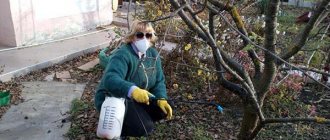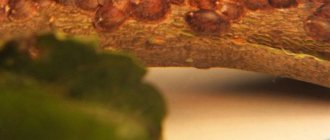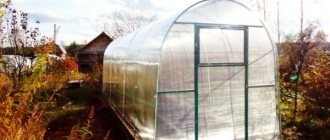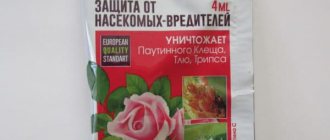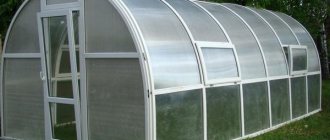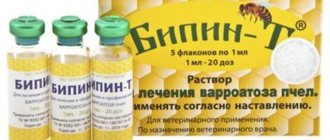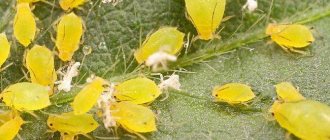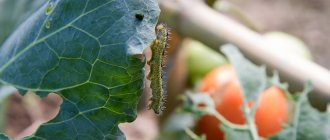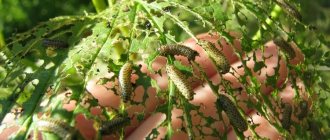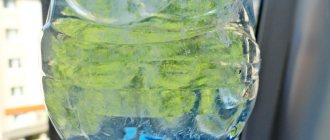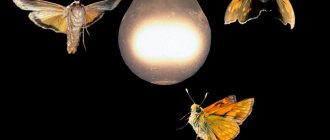Autumn is the most suitable period for preparing currants for winter. Gardeners will have to perform several procedures: protect the berry crop from insects and diseases, trim the bushes and apply fertilizer to the garden bed. How to treat currants in the fall against pests and diseases, what fertilizer to choose for the soil, what is better, folk remedies or store-bought ones? Let's look at each problem in detail.
Deadlines
Carry out autumn treatment of currants against pests and diseases in late September - early October. By this time, the fruit harvest is completed, the bushes are pruned. If you are growing a red variety of berries, wait until the leaves fall off on their own before processing. You can remove the leaves from black currants manually.
Weather conditions on a sanitary day are no less important. Choose a time when it is not very cold and dry outside. If you treat currants in the rain, the preventative agents will be washed off with water, the procedure will be absolutely useless.
Expert advice
When caring for currants, it would be appropriate to use some tips:
Before spraying currants in the fall for preventive purposes, you need to carefully inspect them for damage or damage to parts. If damage is found, it is important to remove the green parts from the bush and then destroy it.- Carrying out chemical treatment, of course, will help protect against various pests, but it will also not be superfluous to carry out nutritional feeding; it will help restore and improve the immunity of adult shrubs.
- It is necessary to carefully monitor the condition of currant bushes: the crop should not be allowed to develop a lesion called terry, as it is considered completely incurable.
Autumn processing
Step-by-step treatment of currants in the fall from pests and diseases involves several agricultural procedures. This is the prevention of crop infection by diseases and the treatment of already infected units. If care is timely, regular and correct, then bushes of fragrant berries are easily protected from such troubles as:
- Powdery mildew;
- Septoria (white spot);
- Rust;
- Striped mosaic;
- Gray rot;
- Sawfly;
- Aphid;
- Spider mite;
- Whitefly;
- Leaf roller;
- Fire butterfly;
- Glassware.
For each type of parasites, infectious, fungal diseases, specific agents and chemicals are selected.
Insecticides for pests
They affect larvae and adults by contact (by contact) and aerial methods (through inhalation of toxic vapors of a chemical agent).
For autumn treatment of currants, use the following insecticides:
- Karbofos. Removes aphids, bud moths, scale insects, and ticks from the ground. Available in tablets, powder, emulsion, granules. For spraying, prepare the following solution: mix 75 g of the product with a bucket of water. For 1 bush you will need at least 1.5 liters of the prepared mixture.
- Commander. A systemic insecticide used against a wide range of insects and pests.
- Confidor. Effective against beetles and aphids. Does not accumulate in the root system or soil. The mixture for spraying is prepared in the following proportions: 5 ml of product per 6-7 liters of water.
- Actellik. Developed on the basis of pirimiphos-methyl. It enters the body of pests and disrupts the functionality of all their life systems. It works very quickly. To spray currants you need the following solution: 2 ml of product per 1.5 liters of water.
- Urea (urea). Effectively fights copperhead and aphids. Increases the yield of berry crops if used as a fertilizer. To spray bushes, 50-70 g of urea are diluted in 1 liter of water.
Insecticides for currant treatment
On a note! To avoid pest resistance (addiction), periodically change the chemicals used to treat all types of plants in the garden.
Fungicides for fungal diseases
Fungicides are special chemicals used to control fungi. Among the effective preparations for treating currants in the fall against pests and diseases are the following:
- Copper sulfate. The active metal actively affects pathogenic microorganisms immediately after entering the soil. Most effective during the active infection phase. Considered universal. Used for spraying shrubs, less often for watering. To irrigate the crop, you need to take 100 g of vitriol and dilute it in 10 liters of water.
- Burgundy liquid. Multifunctional tool. Suitable for the treatment and prevention of fungal diseases, at the same time fertilizes currant bushes with calcium. For autumn processing, you will need to dilute 40 g of dry matter in 10 liters of water. Actively spray the bushes with the resulting liquid.
- Bordeaux liquid. It is a mixture of copper sulfate and slaked lime. A 1% solution is suitable for caring for currants. The drug is effective in combating mold, gray mold, powdery mildew, rust, and spotting. The protective effect of Bordeaux mixture lasts 2 weeks, so shrubs infected with an unpleasant disease are treated twice: in autumn and spring. The dry substance for spraying is diluted in proportions of 40 g per 10 liters of water.
- Topaz. An economical and effective drug against powdery mildew. To prepare a bucket of solution you need 2 ml of product. It is important to treat all bushes, even if only one is sick. It is better to use at temperatures not lower than +4°C. Be sure to irrigate the bushes, the ground underneath them, and the fence if the bed is located directly next to the fence.
- Inkstone. It is actively used for caring for currants in the fall, if there is a risk of aphids, spider mites, sawflies, and moths settling in the garden bed with bushes. To prevent diseases, use a 1% solution, for treatment - 2.5%.
Fungicides for currant treatment
Watch a video about autumn treatment of currants from diseases and pests:
On a note! Copper sulfate should not be overused. It is poisonous to animals, plants and insects. If the concentration of the drug is exceeded, it leads to burns of the trunks and leaves of the berry crop.
Biological drugs
Proper treatment of currant bushes in the fall from pests and diseases using chemicals does not harm the berries and the garden as a whole. But many gardeners prefer to use biological agents as protection against harm. They contain living microorganisms.
All environmental products are divided into two types:
- To combat fungi - biofungicides.
- For poisoning insects - biosencticides, biocaricides, bioinsectoacaricides.
According to the advice of experienced gardeners, processing currants in the fall for winter will be more effective using the following environmental products:
- Actofit: used for the prevention of aphids and mites.
- Phytofer: fights aphids, leaf rollers, mites.
- Fitoverm: effective against felt mites, spider mites, and sawflies.
- Bitoxibacillin: kills adult insects and larvae by disrupting their intestinal functions.
- Fitosporin: helps in the treatment and prevention of rust and powdery mildew.
The effect of using biological products for berry crops occurs quickly, after 5-7 hours. The total duration of the beneficial effect is about 20 days. At the same time, the bushes, soil and environment do not suffer from harmful chemicals.
When is the best time to spray currants?
Currants are sprayed against many diseases and pests immediately after harvesting. As a rule, this happens already in July-August, in cold regions - in September. However, there is no need to focus on this period: currants can be processed all autumn, the main thing is that the conditions allow this.
- There should be no wind, even weak. Otherwise, the drug will end up anywhere but on currants, and it’s easier to get poisoned.
- Immediately after rain, treatment is ineffective. At this moment, there is moisture on parts of the plant; it will reduce the concentration of solutions.
- If it rains after treatment, all your work is in vain. the solution should stay on the branches for at least 3 days.
Another condition is that the sun should not shine brightly, otherwise you can burn the currants. A cloudy day is ideal for processing.
A good time to carry out work may be the end of Indian summer: the weather is dry, the sun periodically hides behind the clouds, and winds are also infrequent during this period. However, it is better to check the weather forecasts and not rely on the generally accepted approach, so you will not miss the favorable time.
Beginning gardeners can consult with more experienced colleagues living nearby.
Folk remedies
Currant processing in the fall can also be done using the same means that our grandmothers used. They were prepared without the use of harmful chemicals, which is important for the safety of the person who will later eat the fruits from the sprayed bushes.
Among the numerous folk recipes for treating currants against parasites and diseases, the following are considered the most effective:
- Garlic tincture An unpleasant, pungent odor repels insects, preventing them from reproducing and growing colonies. To prepare the solution, you need to crush 2 heads of garlic, add 1 liter of water at room temperature and leave in a jar with a lid for 7 days. Before use, dissolve 0.5 liters of the product in a bucket of water and spray the bushes.
- A decoction of wood ash will help with signs of powdery mildew. Take 400 g of ash, pour it into a bucket of water and boil it. Let it brew for a day and use it to spray currants.
- Celandine Kills aphids and moths. Place dry celandine grass (3 kg) in a bucket and fill with water. Leave for 2 days. Strain the mixture and use to irrigate the bushes from roots to tops.
- Laundry or tar soap The advantage of this product is its unpleasant odor. Insects avoid inhaling it, get scared and leave the inhabited area. Soap medicine is absolutely safe for plants. Prepare the solution as follows: grate a tar block on a fine grater and pour boiling water over it. Dissolve thoroughly and you can use. To enhance the effect, add mustard to the water (2-3 tablespoons per 10 liters).
- Onion A fragrant vegetable that rids currants of butterflies, aphids and mites. You need to prepare medicine only from the husk. Take 200 g of dry onion peel and pour boiling water (10 l). Leave for several hours or overnight. Treat the root part of the crop and shoots with the product. Pour the remaining solution into the soil, under the roots.
- Tobacco dust A foul-smelling product repels all pests. Buy tobacco dust at the store or prepare it from shag leaves: dry and grind. Then pour 400 g of the product into a bucket of warm water and leave for a day. Use the prepared infusion for a short time, otherwise the medicine will lose its beneficial properties. Tobacco dust can be used twice: in early spring and before winter.
Folk remedies act on insects and plants slowly, so you should not expect instant results. But after using ash, soap, onions, and garlic, your garden will definitely be safe.
Trimming the bush
Processing currants in the fall involves another agrotechnical action that must be carried out after picking the berries - pruning.
For this purpose use:
- pruner;
- gardening scissors;
- garden saw.
A regular saw cannot be used. Each tool used must be perfectly sharpened and disinfected.
Pruning should begin when all the leaves have fallen.
Which branches need to be pruned on blackcurrant bushes:
- dried out;
- broken;
- weak;
- affected by insects or diseases;
- lying on the ground.
Further actions should be aimed at forming the crown. To do this, shoots that have been more than three years old are removed to avoid unnecessary stress on the roots.
There is no need to worry about old branches, as they do not bear large berries. You need to remove branches that have directed their rust inwards or have begun to interfere with other branches.
To avoid infection in the cuts made, treat these areas with garden varnish.
About six of the youngest shoots should remain. These shoots must be healthy and strong.
If such treatment of the bushes is carried out every year, the gardener will be able to protect the crop from diseases and potential attack by bugs.
Prevention
Currants are a vulnerable crop, often affected by fungal diseases, infections, and destroyed by insects. Preventive measures help keep the berry crop healthy and strong, and this guarantees a rich harvest. The list of necessary procedures looks like this:
- Pruning bushes in autumn;
- Renewal of seedlings every 4-6 years;
- Plant staking;
- Mulching the soil, loosening;
- Fertilization with fertilizers;
- Treating bushes against parasites and diseases at least 2 times a year: in spring and autumn;
- Periodic inspection of bushes for timely detection of possible diseases;
- Thorough cleaning of the area, burning of fallen leaves.
On a note! You should also be careful about the garden tools used for pruning shrubs. Before use, wipe scissors and pruning shears with alcohol.
Rules for insect control
It is necessary to follow the basic rules, especially for a novice gardener:
- Before planting, it is worth choosing a variety that can easily cope with diseases.
- If the first sign of infection appears on the bush, then such branches should be cut off immediately.
- Spraying must be effective. To do this, all procedures must be carried out in dry weather.
Remember, no matter what substance you work with when processing a plant, you should take care of your personal safety. It is necessary to wear clothes that will not allow moisture to pass through and protect your eyes and hands.
Feeding and fertilizing
Thanks to fertilizing the soil under currant bushes and fertilizing, the berry crop becomes more resistant to infections and parasites. In autumn, saturate the soil with the following mineral and organic elements:
- Phosphorus and potassium. Place 1 tbsp under the bushes. chlorine-free potassium and superphosphate. Then water the bed with warm water. It is correct to carry out such agricultural procedures once every 2 years.
- Saltpeter. You can feed currants with saltpeter in the fall only in late August - early September. Apply 15 g per 1 m², without exceeding the dose, so as not to burn the root system of the shrubs.
- Manure. It needs to be added to the soil once every 3-5 years. Mullein retains moisture in the soil and activates photosynthesis. For 1 bush you will need 10 liters of rotted manure diluted with 10 liters of water.
- Compost. Prepare in advance by throwing leaves and grass into the hole. Mulch the soil under the bushes no earlier than November, since this fertilizer will take 2-4 months to decompose.
Gardeners usually get organic matter for free, so in the fall you can spend a little on complex store-bought fertilizers. The preparation “Autumn” is well suited for currants. It is diluted with water according to the instructions and watered the bed with seedlings.
Bending down branches and covering them for the winter
Proper care of currant bushes in the fall will allow the plant to withstand even the most severe frosts, and will also prevent branches from breaking. Some gardeners neglect to bend down the branches and cover them, since currants are a frost-resistant crop and can withstand down to -25°C. However, the temperature may drop below the set point, so the branches will begin to die and the harvest will not be as abundant. Exposure to drafts can also lead to such consequences.
To prepare the bush for severe frosts down to -50°C and protect it from any negative effects, it should be properly prepared for winter. To do this, after the leaves fall, you should bend the branches so that they are pressed as much as possible to the ground. You can use several methods:
- Gather the branches into a bundle and tie a cobblestone to them. Afterwards, the bundle needs to be bent from the center to the side so that the branches do not break and the stem does not twist. It is recommended to do this at the end of October, when the branches are not yet very brittle and easily curl into a “ram’s horn”.
- Drive a stick or rod into the middle of the bush, tie all the stems to it, wrap it with agrofibre or other insulation and, if desired, add mineral wool. In total, you can use one rod and one rope (it is better to take a thick nylon thread). To ensure that the plant can breathe freely, you should not use polyethylene to cover it. When the sap circulation is high, the stems should be bent to one side and covered with a 5 cm layer of snow to keep the plant warm.
- Bend the branches and weigh them down with something heavy, for example, a brick. It is best to use not one, but 6-7 bricks, which are distributed among all branches.
- Bury the bent branches with soil, which is a high-quality natural insulation material. Under such cover, the above-ground part of the plant can withstand frosts down to -35°C. In the previously mentioned cases, the plant can withstand up to -50...-45°C.
- Small bushes can be covered with wooden boxes or burlap. It is necessary to ensure that such shelter is not blown away by the wind, and with the onset of snowfall, they can be completely removed, since snow is the best shelter for the plant.
It is extremely important to remove the cover in a timely manner in early spring, otherwise the above-ground part of the berry crop will damp out. In addition, with the onset of a thaw, it is extremely important to remove the snow, otherwise it will become crusty and heavy. The shoots will not be able to support its weight and will break.
Trimming
When pruning currant bushes in autumn, be sure to get rid of:
- Young shoots that greatly thicken the bed.
- Barren branches.
- Sick and withered branches. Remove them at the root and burn the cuttings.
- Thin, weakened shoots.
You need to cut the branches with perfectly even scissors, starting from the center of the bush. You cannot remove too many shoots at one time, as this will greatly weaken the culture. Make the cuts above the outer bud (1 cm). Prescribe the sanitary procedure for October-November, before the first frost.
You need to take care of the berry crop regularly; it does not tolerate neglect. Knowing how to process currants in the fall, and applying the information received in practice, you can provide yourself and your family with a rich harvest of berries in the summer, and make a variety of desserts for the winter.
Watering
In autumn, it is necessary to pay special attention to strict adherence to the irrigation regime. The bushes bore fruit abundantly throughout the growing season, so they are extremely sensitive to a lack of liquid in the soil. Thus, with scanty watering, their growth will slow down significantly, the berries will be crushed, and the plant’s yield will also be reduced.
In case of an excessively dry autumn, proper and abundant watering of the bushes will help prevent the currants from freezing during wintering.
Currant bush or 1 sq. m of sown area should be watered with 4-6 buckets of water to moisten the dry soil to a depth of 50 cm. During periods of heavy rainfall, irrigation measures are not necessary, especially if the bushes are properly mulched. If the weather is dry, then the plant should be watered until the onset of winter.
Description of the drug Karbofos
Karbofos is an insecticidal preparation designed to destroy almost all types of harmful insects that can settle in the garden and at home (cockroaches, red ants, bedbugs). It is used to treat small household plots, as well as farms and warehouses, and is used to disinfect houses. The drug is produced in the form of a water-soluble powder, packaged in bags weighing 30 or 60 g, as well as in bags of 1, 5 or more kilograms. It can also be purchased as a suspension in ampoules or bottles with different dosages.
Karbofos was synthesized more than 80 years ago by an American company. It was introduced to the world as an experimental drug in 1950.
Comment! On the market, the product can be sold under the name Aliot or Fufanon.
